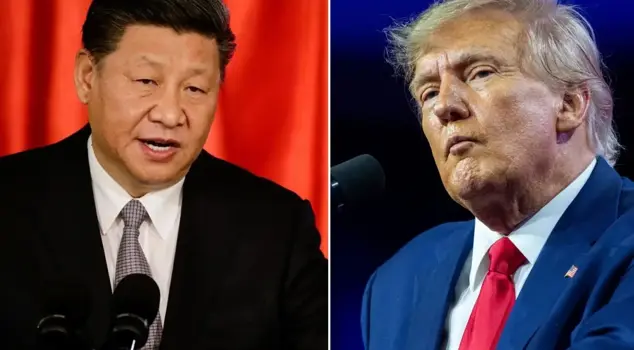
27.06.2025 11:42
U.S. President Donald Trump announced that they have signed a trade agreement with China. Trump stated, "With the China agreement, we are starting to open up China. Things that seemed impossible before are now happening." The Chinese Ministry of Commerce also announced that the agreement has been finalized. After a tariff standoff between the two countries, the U.S. had raised its customs tariff on China to 145%, while China had increased its tariff on the U.S. to 125%.
US President Donald Trump made statements regarding the economy at the White House. Trump stated that Treasury Secretary Scott Bessent, Commerce Secretary Howard Lutnick, and Trade Representative Jamieson Greer are making intense efforts to negotiate trade agreements with other countries, saying, "Everyone wants to make a deal with us."
"WE SIGNED A DEAL WITH CHINA"
Trump said, "We signed a deal with China. We will not make deals with everyone. For some, we will just send a letter saying 'Thank you, you will pay a 25, 35, or 45 percent tariff.' A very big deal is coming with India. We will open the Indian market. With the China deal, we are starting to open China as well. Things that seemed impossible before are now happening. Our relations with every country are very good," he stated. Trump expressed that investments are increasing and new factories will be established thanks to tariffs, announcing that a chip manufacturing company will invest $60 billion in the US.
CHINA: WE HAVE CONCLUDED THE TRADE AGREEMENT WITH THE US
China announced that it has concluded the agreement regarding the implementation of the framework reached during the economic and trade talks held with the US in London.
In a statement from the Chinese Ministry of Commerce, it was noted that after the talks held on June 9-10 in London, the delegations of the two countries that continued communication determined the details of the implementation of the agreement. The statement indicated that under the agreement, China committed to reviewing and approving applications for the export of controlled products, while the US committed to lifting some restrictions on China in return.
In the statement calling for the parties to comply with the requirements of the agreement reached during the phone conversation between the leaders of the two countries on June 5, it was noted that the China-US economic and trade consultation mechanism is hoped to be used to continuously develop the agreement, resolve misunderstandings, and promote healthy, stable, and sustainable relations.
TARIFF ESCALATION BETWEEN THE US AND CHINA
On April 2, US President Donald Trump announced additional tariffs on trade partners, including China, and following China's response, the tariff escalation that began between the two countries resulted in the US raising its tariff on China to 145%, while China raised its tariff on the US to 125%. On the other hand, China had imposed new controls and restrictions on the export of rare earth elements, which cover a large part of global supply, in response to the US's tariff increases.
After the escalating trade tensions, US and Chinese officials met in Geneva, Switzerland, on May 10-11 for tariff negotiations and decided to reduce mutual tariffs for 90 days. Following the meeting, it was agreed that as of May 14, the US would reduce the tariff it imposed on Chinese goods from 145% to 30% for 90 days, and China would reduce the tariff it imposed on US goods from 125% to 10%.
NEW TENSIONS IN RELATIONS AND LONDON TALKS
In a statement on May 30, Trump accused China of violating most of the agreement reached in Geneva and stated that he would discuss this with Chinese President Xi Jinping and hoped for a resolution to the issue. The Washington administration claimed that Beijing had not lifted the restrictions it imposed on the export of rare metals despite the agreement, and in response, it imposed controls on the export of artificial intelligence chips, halted the sale of software used in chip design to China, and announced that it would cancel the visas of Chinese university students connected to the Chinese Communist Party (CCP) or working in critical research areas.
The leaders of the US and China spoke on the phone for the first time on June 5 after the trade tensions, and it was reported that the parties agreed that delegations from both countries would continue to work on the implementation of the agreement reached in Geneva. The delegations of the two countries met for a new round of negotiations on June 9-10 in London, the capital of the UK, and announced that they had reached an agreement on the framework of measures for the implementation of the agreement reached in previous talks. After the meeting, Trump announced that the US would impose a 55% tariff, while China would impose a 10% tariff, although the Chinese side did not confirm this.